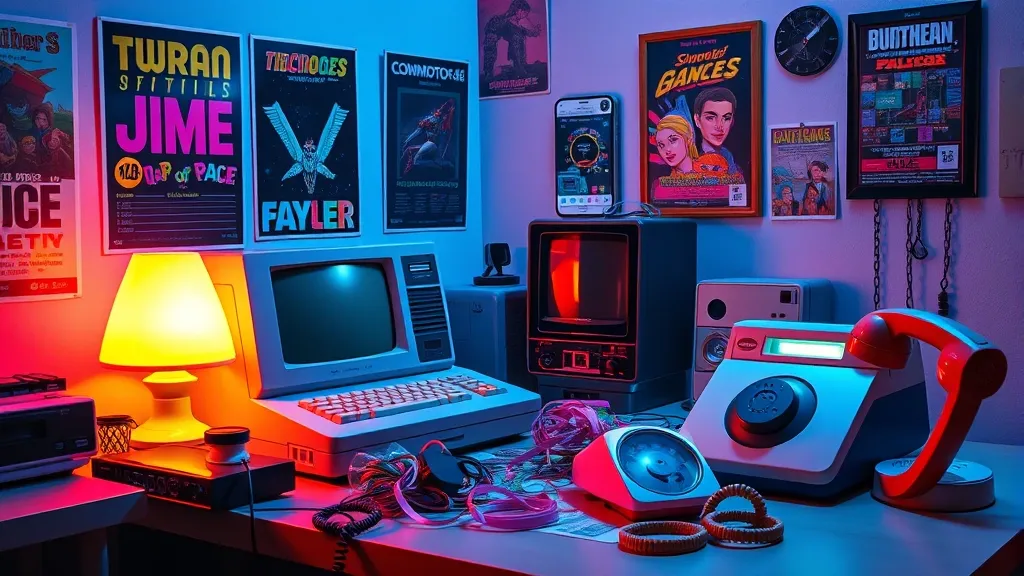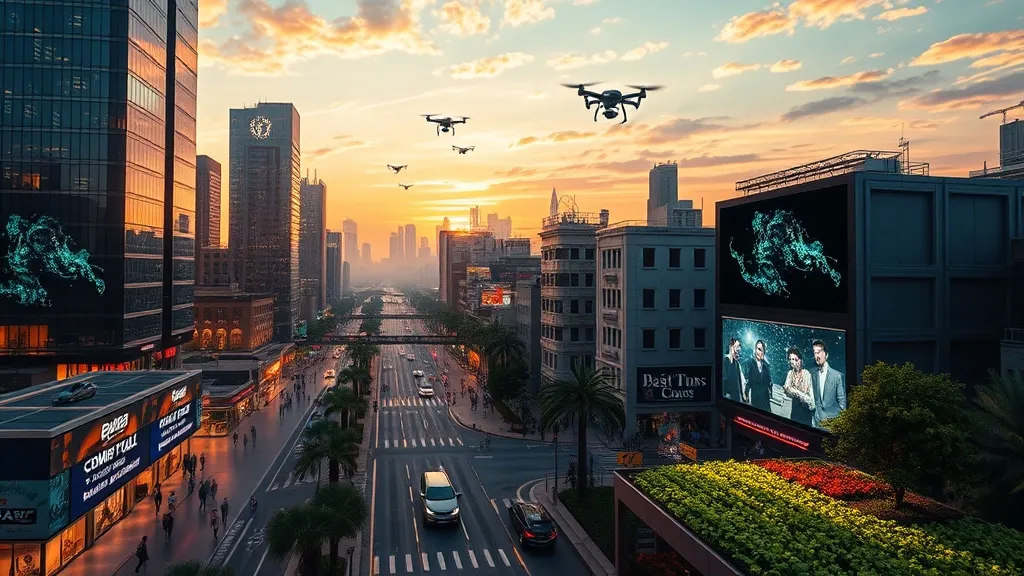Pixelated Dreams: The Birth of Personal Computing
Ah, the ’80s! A decade that brought us neon colors, big hair, and, most importantly, the birth of personal computing. It’s kinda wild to think about how far we’ve come since then, right? Back then, computers were these massive, room-sized machines that only the big shots at universities or corporations could afford. But by the end of the decade, they were popping up in homes like microwave ovens. Seriously, who would’ve thought?
Let’s talk about the game-changer: the Apple II. Released in 1977 but really hitting its stride in the ’80s, it was one of the first highly successful mass-produced microcomputer products. I mean, the thing had color graphics and a keyboard! For many of us, it was like having a spaceship in the living room. And don’t get me started on those floppy disks—if you had a collection of them, you were basically a tech wizard.
Then there was IBM, stepping onto the scene in 1981 with their Personal Computer. This thing was the definition of “business casual” in tech. It was sleek, it was efficient, and it sparked a whole new industry. Everyone suddenly wanted to be part of the “computer club.” I remember my neighbor got one, and I was just blown away. I thought he was a genius for being able to play games like “Pac-Man” on it. Little did I know that he was just as clueless as I was!
The ’80s also birthed the idea of software. Before that, it was all about hardware, but as the decade rolled on, companies like Microsoft began to show us that the real magic happens with the programs that run on these machines. They made it possible for anyone, not just tech nerds, to start using a computer. Talk about democratizing technology!
- Apple II: The colorful hero of home computing.
- IBM PC: The sleek office buddy we all wanted.
- Microsoft: The software giant that made things user-friendly.
By the end of the ’80s, the groundwork for modern computing was laid. It was like the dawn of a new era, and everyone was excited to hop on board. It’s hard to believe now, but these pixelated dreams we had back then paved the way for today’s sleek laptops and smartphones. Who knew that the clunky machines of the past would lead us to the tech-savvy world we live in now? It’s pretty mind-blowing when you think about it!
Dial-Up Drama: Connecting the Dots in a Pre-Internet World
Ah, the ’80s. A time of big hair, neon colors, and the sweet sound of a dial-up modem connecting. Seriously, who could forget that iconic screeching noise? It was like music to the ears of every tech-savvy kid back then, or maybe just a reminder that you were about to embark on a journey into the vast unknown of the early internet.
Before we had high-speed everything, connecting to the internet was an adventure in patience. You had to pick up the phone, plug in that chunky modem, and hope to God it didn’t kick you off in the middle of downloading a picture that took hours to load. And don’t even get me started on the dreaded busy signal. If your mom was on the phone, you might as well just forget about your plans to chat on IRC or browse the latest on AOL. Talk about a major buzzkill!
But despite the headaches, there was something special about that time. The thrill of connecting was real. When that little “you’ve got mail” chime rang out, it felt like you’d just won the lottery. There was a sense of community—chat rooms, forums, and those early social networks like GeoCities—where you could meet people from all walks of life, and hey, it was totally okay to be a little weird. We were all figuring it out together, one pixelated GIF at a time.
It’s wild to think about how dial-up shaped our digital landscape today. Those slow connections forced us to be creative with our online experiences. We learned to navigate clunky interfaces and deal with limited bandwidth, which honestly made us appreciate the lightning-fast speeds we have now. Remember when you had to choose between watching a video or downloading a song? Yeah, me too. We were practically digital jugglers!
As we moved forward into the ’90s and beyond, the dial-up era laid the groundwork for everything we take for granted today. Sure, it was a hassle, but it sparked a passion for connectivity that has only grown. So, the next time you’re streaming your favorite series in mere seconds, take a moment to appreciate the humble beginnings of our online world. It’s all thanks to that slow, screechy dial-up drama.
Rewind to Revolution: The Rise of Gaming and Multimedia
Alright, let’s take a little trip back to the ’80s, shall we? This was a decade where technology wasn’t just evolving—it was exploding! I mean, we went from Pong to Pac-Man in what felt like a blink of an eye. It was like tech was on a serious caffeine buzz.
The gaming scene kicked off big time during this era. Home consoles were becoming a thing, and suddenly, kids (and let’s be real, adults too) had the chance to play video games without having to drop quarters in arcade machines. I still remember the first time I got my hands on an Atari. It was like holding a piece of magic! Of course, I ended up getting my butt kicked by my parents at Space Invaders. Talk about embarrassing!
But it wasn’t just about the games themselves; it was the whole multimedia experience that started to take shape. The ’80s saw the birth of the VCR, which meant we could finally watch movies at home instead of relying on the local video rental store. Just think about it—no more scrambling to find a good seat in the theater, and you could hit pause whenever you wanted! It was revolutionary, folks. Who knew that watching The Breakfast Club on repeat would be a rite of passage?
As gaming evolved, so did the graphics and sound. Remember those pixelated characters? They were like little blocky superheroes! It was all about the 8-bit music and those catchy tunes that stuck in your head. I swear, I still hum the Mario theme song when I’m cooking dinner. It’s like my secret chef soundtrack!
- Rise of Home Consoles: Atari, Nintendo, and Sega took the spotlight.
- VCRs: The game-changer for home entertainment.
- Graphics and Sound: Evolving from 8-bit to something that resembled actual visuals.
In a nutshell, the ’80s was a pivotal time for gaming and multimedia. It laid the groundwork for everything we enjoy today. Without those early innovations, who knows where we’d be? Probably still trying to beat our friends at Pong while wearing leg warmers. And honestly, who wants to go back to that?
From Cassettes to Cloud: The Enduring Legacy of ’80s Innovation
Back in the day, if you wanted to listen to your favorite tunes, you had to pop in a cassette. Remember that satisfying whirring sound? You’d sit there, ready with your finger hovering over the “record” button, just praying your little brother wouldn’t walk in and ruin your chance to snag the latest hit off the radio. Those were the days, right? And let’s not forget about the joy of rewinding—like, who had time for that? But it taught us patience, or at least a creative way to kill time while waiting for the perfect song to come on.
Fast forward a bit, and suddenly we’re staring down the barrel of floppy disks, CDs, and, eventually, the internet. It’s wild how quickly things changed. The ’80s laid the groundwork for what was to come, with personal computers entering homes and revolutionizing how we stored and shared data. I mean, can you imagine asking your parents to save your school project on a floppy disk today? They’d probably just Google it!
By the time the ’90s rolled around, we were moving from tangible media to all things digital. The rise of the internet brought us email, file sharing, and, boom! Suddenly, the cloud became a thing. And while we may have traded in our cassettes for cloud storage, the essence of sharing music and memories remained the same. Just in a much less messy way—no more tangled tapes to deal with!
- Cassettes taught us about the joy of creating mixtapes.
- Floppy disks were the unsung heroes of data storage.
- The internet opened doors we didn’t even know existed.
So here we are, living in a world where we can store thousands of songs and gigabytes of memories in a tiny little cloud. It’s mind-blowing, really. The ’80s might seem like ancient history, but the innovations from that decade have shaped our digital future in ways we’re only beginning to understand. And honestly, I still can’t help but feel a little nostalgic for the days of cassettes, even if they did take up way too much space in our walkmans!



